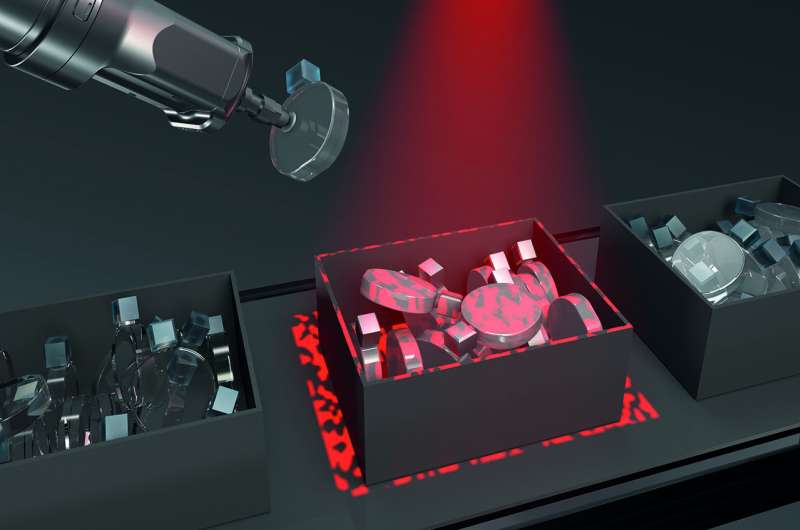
A task that once took 15 seconds can now be completed in under 2 seconds! Thanks to innovative single-shot technology, the goROBOT3D system developed by the Fraunhofer Institute for Applied Optics and Precision Engineering (IOF) can now measure 3D objects more effectively, even those that are transparent or very dark. This new technology will be showcased for the first time at the automatica trade show in Munich from June 24 to 27.
While humans can easily see many objects, robotic systems face challenges with materials like transparent plastics, reflective metals, or deep black surfaces. These so-called “uncooperative” surfaces can be hard for regular sensor systems to detect. Researchers at Fraunhofer IOF are overcoming this hurdle with their goROBOT3D system, which utilizes smart thermal imaging techniques to identify these challenging materials.
Fraunhofer IOF’s team has spent years enhancing thermal 3D sensor technology, resulting in swift measurement times for transparent or dark items, dropping from 15 seconds to just 1.5 seconds. They achieved this by inventing a new projection method specifically for thermal 3D sensors.
Single-shot Technology: The Game Changer
This new technique employs a single-shot approach to thermal 3D measurement. “Our method heats the surface of the object in a structured way. A thermal point pattern is then emitted from the surface, which we capture with two sensors. From these images, we can create a 3D model,” explains Dr. Martin Landmann, a researcher in the Imaging and Sensing department at Fraunhofer IOF.
Instead of using traditional fringe projections for pattern creation, the researchers now use two diffractive optical elements (DOEs) to generate a unique point pattern. These elements leverage light diffraction to create and shape the laser beam into a pattern, allowing for efficient projection onto transparent objects in a very short time.
From Point Patterns to Gripping Actions in a Flash
Previously, many image pairs needed to be taken and analyzed for processing transparent materials—a lengthy endeavor. “With our new method, we only need one pair of thermal images to reconstruct 3D information within milliseconds. This speeds up the entire measurement process dramatically,” adds Dr. Landmann.
The collected 3D data is examined using artificial intelligence, which determines the best gripping points and directions to relay to a robotic arm equipped with a suction gripper. “We specifically use a ‘bin-picking’ strategy,” he clarifies. “This means we can effectively pick items from disordered settings.”
Smooth Production Without Interruptions
The shorter image capture and analysis times open up exciting new opportunities for automation, especially in manufacturing or design settings. Robots can reliably detect and grab transparent or dark objects without causing delays in the workflow. “While one item is being handled, the next can be measured simultaneously. This promotes continuous operations,” emphasizes Martin Landmann.
Designed to be versatile, this single-shot technology can easily integrate into various applications. Interested individuals can see it in action at the automatica trade fair in Munich from June 24 to 27, 2025. Stop by Fraunhofer IOF at Hall 4, booth 319, to learn more about this cutting-edge technology.
If you would like to see similar Tech posts like this, click here & share this article with your friends!

